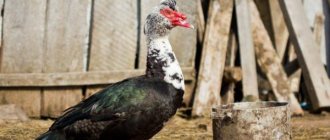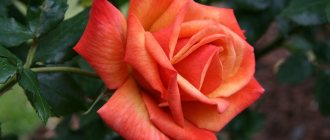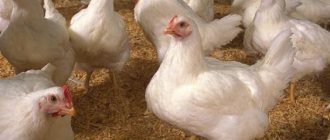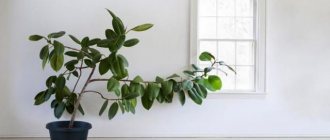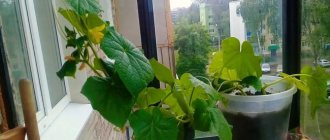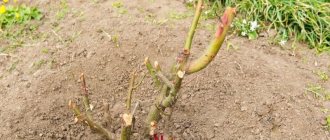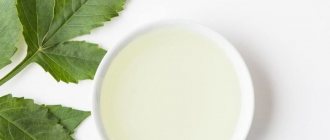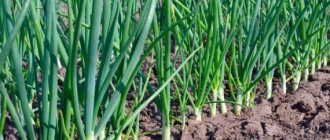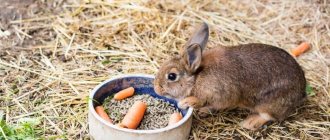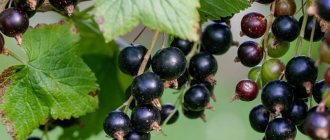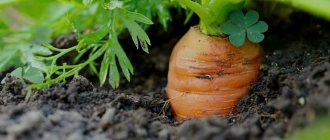Coniferous crops transform the area beyond recognition - their decoration is so impressive. Let's thank these wonderful plants with proper care and, first of all, provide them with care in the spring.
Conifers are ready to decorate the site at the earliest possible time, when all the other inhabitants of the garden are just beginning to emerge from winter hibernation. True, they do not always succeed in this: changeable spring weather brings with it many dangers and often spoils their appearance. We can help the evergreen beauties survive this difficult period, strengthen their health and preserve their beauty.
Removing winter covers
Do not rush to remove the cover from coniferous crops with the arrival of spring. It protected the plants from frost and snow during the winter months and will prove even more useful in early spring, when the sun begins to warm up.
Bright rays of the sun trigger an active process of photosynthesis in the aboveground part of conifers, which requires a sufficient amount of moisture, and causes the heated needles to intensively evaporate liquid. However, the root system of plants is still in frozen soil and is unable to extract water.
If adult plants can still save themselves from drying out by the supply of moisture in the wood and get away with only yellowing of the needles, then for recently planted babies such spring conditions pose a threat to life. It is for this reason that you should postpone the removal of winter shelters until the snow has completely melted and wait until the soil thaws to at least a depth of 15-20 cm.
To speed up the thawing of the soil in the root layer of plants, first clear the tree trunk circle of snow, and after a few days remove the mulch. Carry out such procedures when the air begins to warm up to 4-5°C during the day, and weather forecasters no longer predict severe frosts.
Popular drugs: review of composition and effectiveness
To make feeding calculations easier, complex additives have been created for needle-bearing representatives. Such as Greenworld long-acting fertilizer for coniferous plants or other mixtures.
Ready-made fertilizers:
- have an optimal ratio of essential microelements;
- quickly absorbed by plants;
- effective and easy to use.
The use of mixtures ensures the health of conifers and maintains the rich color of the needles. And protects crops from fungal diseases, ensuring soil fertility.
Bona Forte
According to experts, this is the best fertilizer for conifers, suitable for spruce, larch, thuja, cypress, juniper, pine, yew and fir. Created on the basis of all important microelements and vitamin complexes.
The composition of Forte fertilizer for conifers includes succinic acid. It is an effective stimulant that increases the immunity of crops.
The mixture is also good for preventive purposes, for protecting crops from bark beetles.
Fertilizer "Forte" for conifers is used:
- For open landings. Once every 1.5-2 weeks. Complementary feeding begins after the soil thaws, in spring and autumn (25-30 days before the onset of cold weather).
- For domestic conifers. Application period: March-October, once every 8-10 days. And once a month from November to February.
Fertilizer "Bona Forte" for conifers is economical. Its consumption is 10-11 liters per 5 m2 of plantings. And the remaining mixture is stored until the start of subsequent complementary feeding (up to 2 weeks). For home crops, it is more advisable to purchase fertilizer for conifers Bona Forte 1.5 l. After expiration, the mixture does not lose its beneficial qualities.
Osmocote
4th generation fertilizer, characterized by programmed release of microelements. Consumption rates: 3-5 g per liter of soil. After adding the additive and watering, the process of releasing mineral substances begins in a couple of days. The fertilizer is safe and highly digestible.
Osmocote is ideal for plants that require special care when grown in greenhouses.
Do you use folk signs in gardening?
"Florovit"
A mixture of Polish production is used in the autumn and spring periods:
- in the fall to reduce crop stress during transplantation, to enhance frost resistance and prepare for winter dormancy;
- in early spring - as the first feeding before the growing season.
“Florovit” is also recommended for use in summer under unfavorable conditions: drought and heat. Thanks to the increased amount of potassium, the supplement stimulates enzymatic processes and helps optimal fluid distribution.
"Fertika" for conifers: fertilizer, instructions for use
Fertika is a fertilizer for conifers, recommended for use by some lovers of such crops. But keep in mind that the supplement does not contain magnesium and contains nitrogen (about 16%). Therefore, the mixture is used in diluted form. Liquid fertilizer for conifers with nitrogen inclusions can be used no more than once every 5 years.
“Fertika” is a fertilizer for conifers, used in spring and summer with an unlimited shelf life. Consumption rates: 10 ml x 10 l of water daily for 1.5-2 weeks. Then the standard increases to 45 ml and is used once every 3-4 weeks.
"Agricola"
To ensure an optimal ratio of micro- and macroelements, Agricola is used, a concentrated fertilizer for coniferous plants. The solution also includes humic (humic) acids.
Humic acids are a complex mixture of organic natural fertilizers formed during the decomposition of dead plant parts.
The additive was created for good care of conifers. The composition, rich in important microelements, gives the needles a bright, emerald hue. The solution also helps the growth of shoots.
"Zdraven-Turbo" for conifers
Spring feeding. It has the necessary complexes and microelements and is enriched with magnesium. But it also has nitrogen inclusions - about 22%. Therefore, the mixture is used strictly according to the instructions. It is not recommended to use “Zdraven” in the fall.
The drug "Aquarin"
The water-soluble mixture is used in the fall (before early September). “Aquarin” ensures the successful development of plants; it is also beneficial for the condition of needles. It also improves the resistance of evergreens to diseases and bark beetles.
"Green Needle"
An excellent autumn fertilizer for conifers. Large reserves of sulfur and magnesium give the needles a bright emerald color and stop yellowing. And the low nitrogen content (only 3.3%) makes this fertilizer completely safe for evergreens.
"Hom"
The drug "Hom" is a fertilizer for conifers with a healing purpose. An effective additive that helps conifers resist fungal diseases. "Hom", which is copper oxychloride, is a pure fungicide that effectively suppresses bacteria in the soil.
Preventing sunburn
If you did not cover your conifers for the winter, be sure to protect them from the bright sun at the end of February or beginning of March. There is no need to completely wrap the plants: on the south side, cover the crown with spunbond, burlap or other breathable material, and secure it with twine. For low crops, you can build a screen on the sunny side - attach a piece of plywood, a pallet, a mat or other available material nearby.
Use the same principle to remove the winter cover. First, open the crown of conifers on the north side, and when they adapt to spring conditions, remove the cover completely. This will protect the plants from the burning rays of the sun and allow them to breathe deeply.
Timing and rules for adding nutrients
It is recommended to feed evergreen plantings in spring and summer. It is also allowed to add nutrients in the fall, before cold weather.
in spring
When feeding coniferous plants in the spring, the mixtures are applied to the tree trunk perimeter. The procedure is carried out in early spring, after the snow has disappeared and the surface layer of soil has dried.
The following additives are used:
- if the needles turn a little yellow after the cold weather, “Zircon” is added;
- The needles are treated with Ferovit.
Such care is carried out four times with a break of 10 days. When the needles turn brown, food is added throughout the summer. Instead of "Ferovit" you can use "Siliplant". And the best fertilizer for coniferous trees when replanting in the spring is the Bona Forte mixture.
In summer
At the end of June, evergreens need mineral mixtures and vermicompost. During the summer season, liquid fertilizers are used twice a month. The best for maintenance fertilizing are “Fertika”, “Agricola” and “Bona Forte”.
in autumn
The application of useful mixtures in the fall is carried out 25-30 days before the onset of frost. There is no need to feed the needles later - this will provoke the growth of new branches, which will die in the winter.
Mineral mixtures and vermicompost are necessary for evergreen plants
For evergreens, the use of nitrogen-containing mixtures in the autumn months is prohibited. Such mixtures lead to the death of the crop.
In the fall, foliar feeding of conifers using Florovit is used. The dry mixture is applied along the tree-trunk radius or with digging.
Crown cleaning and pruning
After removing the covers, carefully inspect the crowns of conifers. If you notice a frost hole (crack) on a trunk or skeletal branch, clean the wound with a sharp knife until it reaches healthy wood and treat it with a 3% solution of copper sulfate. Let the damaged area dry out a little and cover it thoroughly with garden varnish or RanNet paste.
Cut out any dead, broken or diseased branches. Remove excess shoots, giving the crown the desired shape. Remove unnecessary branches “in a ring” without leaving stumps. Coat large cuts with garden varnish.
Do not be overzealous with pruning - coniferous crops grow very slowly.
After this, put on thick gloves and clear the crown of dead needles - this will increase the decorativeness of the plants and become a preventive measure in the fight against diseases and pests. Proceed carefully: run your fingers several times from the base to the top of each branch, as if combing out pine needles.
Some conifers change their appearance throughout the year: in winter, the needles may acquire a grayish tint or turn khaki. Before you mercilessly cut out branches with dull needles, make sure that this is not a feature of the variety or species of your coniferous pet.
Choosing a pot
Drainage in a pot with fir is required. When the earthen clod becomes waterlogged and water stagnates, its roots rot very quickly. To grow fir in a pot, it should be taken into account that the new container should be 5-10 liters larger than the original one. Together with the earthen lump, the seedling is simply transferred to a new container and the required amount of soil is added.
A large pot has a number of advantages:
- the wood in it is more stable;
- the soil remains moist for quite a long time;
- There is no need to replant the plant frequently; it is enough to change the pot every 3 years.
The most favorable period for replanting fir is September or October.
Related article: Stinging tree description and features
Watering coniferous plants
Until the soil completely thaws, it is useful to irrigate the coniferous branches with slightly warm water - this will protect them from drying out and preserve their decorative appearance. Foliar watering will come in handy only if the outdoor thermometer readings are positive. Carry it out at noon so that the crowns of the plants have time to dry out before the evening - night spring frosts will provoke the formation of an ice crust on the needles.
Root watering in early spring will help the soil to thaw faster, and the roots of conifers to wake up faster and get to work. An important nuance: start watering conifers at the root only when severe night frosts have subsided. Carry out the procedure during the midday hours so that the water has time to be absorbed until the evening and has its positive effect - gradually melting the frozen soil in the root layer of the plants.
In early spring and in the future, observe moderation when watering roots. It is impossible to waterlog the tree trunk of coniferous crops - this will provoke rotting of the roots. In the second half of spring, allow mature plants to drink only during periods of prolonged drought. Water the babies regularly so that the soil in their root layer is always slightly moist.
When can you plant fir?
One of the most affordable ways to acquire a conifer is to buy a ready-made seedling with a closed root system. The advantage of such plants is that they can be planted almost all year round: spring, autumn and even summer. The only thing is that when the soil is already very frozen, it is better not to risk it, but to keep the seedling in the house until spring.
Another important point is that plants in pots are planted by transshipment. At the same time, the earthen lump remains intact, and along with it, the mycorrhiza living in the roots, which helps obtain food and moisture.
Fertilizing conifers in spring
Help conifers, exhausted by winter hardships, regain strength - immediately after the snow melts and the soil thaws, feed the plants. The easiest way is to spread compost in a circle around the tree trunk in a layer of 3-4 cm and mix it with the top layer of soil.
For spring feeding, you can use complex mineral fertilizers. Give preference to preparations designed specifically for conifers - they contain a complex of minerals and trace elements, balanced specifically for the needs of such crops (Bona Forte For Conifers, Fasco Conifers, Pokon Conifers, etc.). Such fertilizers are usually produced in the form of granules - they need to be scattered in a circle near the trunk and embedded in the soil to a shallow depth (up to 5 cm) at the rate specified in the instructions.
For conifers, which in the spring are distressed by yellowed decorations, select fertilizers with a high iron content. Plants with brown and crumbling needles need increased doses of silicon.
Coniferous crops are famous for their hardiness and unpretentiousness, but this is not a reason to ignore them. The spring procedures described above will not take up much of your time, but will guarantee good health and highly decorative beauty of evergreen beauties.
Types of fertilizers and their description
The main purpose of additives for coniferous crops is to maintain full growth and preserve the color of the needles. This also requires macroelements such as iron and sulfur.
Fertilizers created for evergreens do not use chlorine - this substance is harmful to needle-bearing plants.
Minerals
Autumn care for evergreen crops includes fertilizing with mineral superphosphates. Dolomite flour is recommended for fertilizing (0.5-1 kg per tree). The dry additive is scattered around the root circle and watered. During winter, minerals transform. And in the spring they turn into a substance convenient for absorption by the root system of crops.
Organic
The value of organic fertilizers lies in their rich composition. It is enriched with important macro- and microelements and potassium.
The following fertilizers are used:
- vermicompost (or vermicompost) is a substrate formed as a result of the life activity of earthworms;
- rotted compost consisting of food waste and green grass.
Organics are added to the diet of evergreens in the spring. The fertilizer is placed near the trunk and mixed with the surface layer of soil.
Complex Supplements
All elements necessary for the health of conifers in the required volume are included in the ready-made mixtures. When choosing them in stores, study the composition. Good supplements have an increased amount of microelements. Indeed, if they are deficient, conifers are at risk of chlorosis - a change in the color of the needles (browning or yellowing).
How to feed conifers in spring
Spring is the beginning of the growing season, when conifers need fertilizing with minerals. At this stage, it is permissible to add nitrogen, since during the summer period the active growth of the tree is fully justified. The main element that should be contained in spring fertilizers is phosphorus. It helps to increase green mass and promotes the development of new needles.
Information! Due to the characteristics of the culture, fertilizing is especially necessary during the strengthening of a young tree, that is, during the first decade.
In the spring, the soil around the trunk is loosened: this saturates the soil with additional air, making it lighter. Along with loosening in the spring, organic matter is added. Mature compost is suitable for these purposes.
Features of planting fir in a room
Fir in a container looks very impressive, but its cultivation requires compliance with a number of rules.
To make fir care more convenient, it is better to use a pot stand on wheels - this way an adult tree can be easily moved around the room.
Lighting, humidity and temperature
If the seedling was purchased in winter, then before planting the fir in a permanent pot, it needs to be given time to get used to the new conditions. At first, the conditions should not differ from those in the store - at a lower temperature than in the room.
As soon as the tree adapts to its environment, move it to the place where you plan to leave it in the future. You need to take care of a good tray and drainage from the beginning - fir loves moist soil, but does not tolerate stagnant moisture (its roots simply rot).
Article on the topic: Syzygium cordate description and features
Any air is suitable for normal growth of fir. There is absolutely no need to take any measures aimed at moistening the fir habitat.
How to choose a container for planting fir
The purchased tree can be immediately planted in a larger (5-10 liters) pot with suitable soil, without destroying the earthen ball around the roots. It is preferable to grow fir in a large pot because they are more stable, hold more soil and, accordingly, the soil in them remains moist longer.
But dwarf fir needs to be replanted into larger pots every 2-3 years. The ideal time for transplantation is September-October. In order for the fir to take root in a new place, there is no need to remove soil from the roots, and the soil after replanting should be fertilized with preparations.
Preparing the soil for planting fir
The main thing you need to take care of is the correct choice of soil. The soil should be nutritious and neutral (possibly slightly alkaline).
Under natural conditions, fir propagation occurs by seeds, so it is better to take light soils, loams, ready-made soil for coniferous plants or a special mixture (clay, peat, sand, leaf soil) as a basis.
To maintain normal nutrition, complex fertilizers are added when planting. In this case, you need to ensure that the root collar of the fir is at soil level.
How to plant fir at home
Before purchasing a growing fir, carefully remove it and its roots from the pot to evaluate the root system.
Like the tree itself, they must be fresh and the soil moist. How easily you can grow fir at home directly depends on how the care rules were followed in the store.
Many stores offer to buy fir planted in a special substrate. The tree will not live long in such soil, so such purchases should be avoided. Seedlings need to be purchased only with a lump of earth - such fir is grown from seeds and packaged by the manufacturer with the expectation of receiving minimal stress during further transportation.
After transplanting the fir into a new container, thoroughly moisten the soil. To do this, it is recommended to place the pot in a sink, bucket or bowl of water for a couple of hours. After this procedure, you need to get rid of excess water through the drainage holes.
Now the pot of fir can be placed in a decorative flowerpot (after you grow the tree larger - in a flowerpot). If volume allows, you can add a layer of expanded clay to the bottom and pour in a little water to raise the humidity level.
